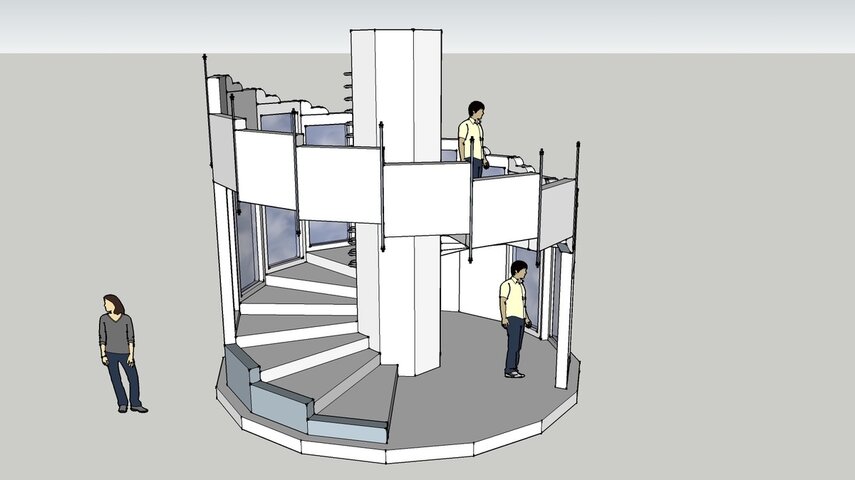I've been in this business for over 50 years and have designed, engineered and built a lot of turntables, from 6' diameter revolving fireplaces to 40' diameter, steel framed, permanent units. You DO NOT need, nor even want a
thrust bearing for your
unit. I think your designer has mis heard the advice she received from her consultant. A
thrust bearing is designed to handle an
axial load, parallel to the axis of rotation
McMaster-Carr . A
turntable puts a radial load, perpendicular to the rotation axis, on the pivot pin. For the
unit you pictured, especially if it is to be moved by man
power, a common sleeve bearing or a pipe and sleeve would work just fine. If you want a more precise and sophisticated bearing, you want a flange bearing
McMaster-Carr click on the mounted bearings. If you Go for the flange type bearing you will need a cold rolled steel axle rod for the pivot pin and it will need to be welded to a plate with 4 or more gussets to support it.
For the
unit you pictured, 4" diameter casters are the minimum size you should use, 6" would be better. The best, quietest and smoothest method of castering a
turntable is to mount the casters, rigid, (NEVER use swivel casters on a
turntable) wheels up (inverted) to a 3/4" ply plate. The inverted position runs smoother and quieter, dirt and debris can't get under the wheels and if desired,
electric circuits can be run between the casters to the center where there a number of ways to run the
circuit to the
turntable. The plywood
caster plate sits directly on the floor and needs no framing, just cleats or mending plates across any joints between sheet of ply to prevent them from shifting. The pivot pin (or pivot bearing, either one) is also attached to the ply plate the entire
unit can sit directly on the floor and is self contained, so it need not be bolted or fastened to the
stage floor. Of course the underside of your
deck must have a 3/4" minimum layer of ply along the
caster paths to support the rolling weight. Adding a layer of 1/4"
masonite to the plywood will provide a very smooth, quiet running surface.
How many casters and the placement depends on what materials you use to
build the
turntable. There is no specific number or
spacing, but a common
spacing is in concentric rings. The first ring is about 4' in diameter and each ring is spaced about 4' further away. The casters in each ring are about 4' apart. The reason for the 4'
spacing is that the most common materials for framing are 2x4 boards and 3/4" plywood. The
spacing is based on the strength of those materials.
Hope this helps, if you have questions, contact me.



